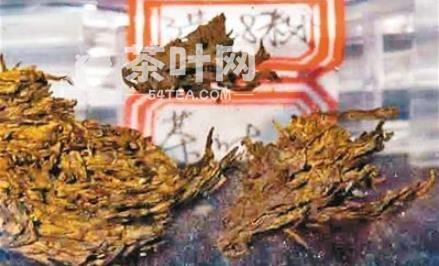Tea leaves unearthed from the Hanyang Mausoleum, after nearly eight years of identification, in 2015, the Chinese Academy of Sciences officially confirmed that the plant samples unearthed from the Hanyang Mausoleum for the ancient tea leaves, these tea leaves are more than 2,100 years old. iXp Tea Leaf Network
And recently, the tea unearthed from the Hanyang Mausoleum has been certified by the Guinness Book of World Records as the oldest tea found to date. iXp tea.com
 iXp tea net
iXp tea net
These dark brown tea leaves in front of you are unearthed from the Hanyang mausoleum, archaeological researcher said, this is the oldest tea specimen found so far. iXp tea net
In fact, as early as 1998, archaeological researchers began archaeological research on the Hanyang mausoleum, when the mausoleum sealing soil around the discovery of 86 outside the hidden pits, in order to find out, archaeological team members have been sealing the soil on the east side of the 11 outside the hidden pits for trial excavation. And today see these tea is from the 15th pit found. iXp Tea Net
 iXp tea net
iXp tea net
Shaanxi Provincial Research Institute of Archaeology Research Institute Ma Yong Ying: “1998 to 2005, Shaanxi Provincial Research Institute of Archaeology of the Hanyangling Imperial Mausoleum sealing soil on the east side of the 11-21 external pits carried out archaeological excavations, we see today’s ‘tea’ on the excavation in the No. 15 External Storage Pit. iXpTea.com
This pit may symbolize the institution of storage, the eastern half of the partition is the remains of grain, tea specimens are mainly mixed with grain, at that time when the excavation of tea specimens we collected out of the laminated, can not see what kind of plant at all.” iXp tea net
 iXp tea net
iXp tea net
Ma Yongweng introduced, these 11 external hidden pits are east-west, each external hidden pits by the pit body and passageway two parts. Pit body by the upper shed wood, columns, side square wood, baffle, sealing the door, paving floor, floor medical devices and other wooden structures constructed in a long box space, in this space to place a variety of burial goods. At that time, the excavated artifacts in this group of outer storage pits were of various types and in huge quantities, including clothed terracotta figurines, ceramic animals, wooden carriages and horses, pottery, copperware, ironware, and stoneware, etc. iXp Tea Net
A large number of animal bones were found in the outer storage pits No. 13 and No. 14, and the animal species include cattle, sheep, goats, dogs, pigs, deer, rabbits, chickens and large birds. All these animals were put into the pits after being executed, and the skeletons were well preserved. Tea was unearthed in the 15th pit of the external collection of wooden partitions as a boundary between the east and west, the west section of the main placement of wooden carriages and horses and clothing ceramic figurines, the east section of the grain, and a small amount of “half a taels” money, iron lamps and ceramic figurines of animals, and so on. Unearthed grain has been decayed carbonization, was layer-shaped, thickness of 2-8 cm. After identification, the types of grain are corn, rice and quinoa plant seeds, etc. iXp tea net
 iXp tea net
iXp tea net
Due to the age, these plant remains have been decayed and carbonized, it is difficult to distinguish what it is, so at the end of 2007, Shaanxi Provincial Institute of Archaeology staff will be part of the excavated plant remains sent to the Chinese Academy of Sciences for identification, after more than 8 years, the results of the test in 2015 finally came out. iXp Tea Net
Shaanxi Provincial Institute of Archaeology Research Institute Ma Yongying: “According to his identification, it is believed that these are bud tea, this discovery at least proves that the pre-Han Dynasty, tea has appeared in the diet of the court, this tea is so far archaeological discovery of the world’s earliest tea specimens.” iXp tea net
